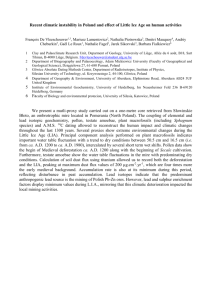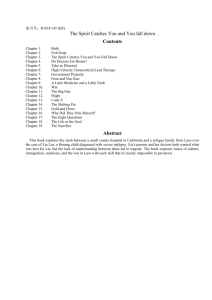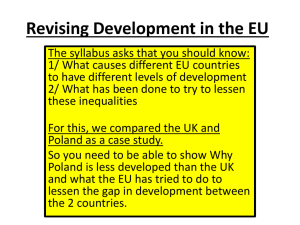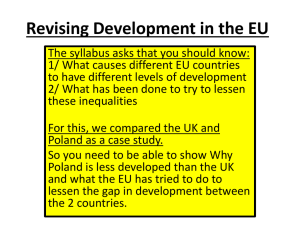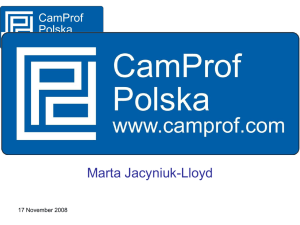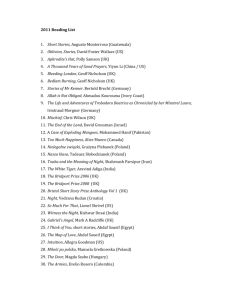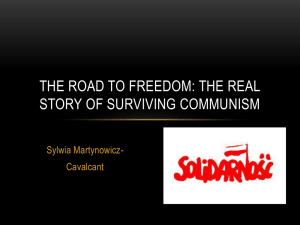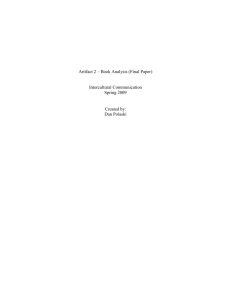EGU 2010 De Vleeschouwer et al_Poland - ORBi
advertisement
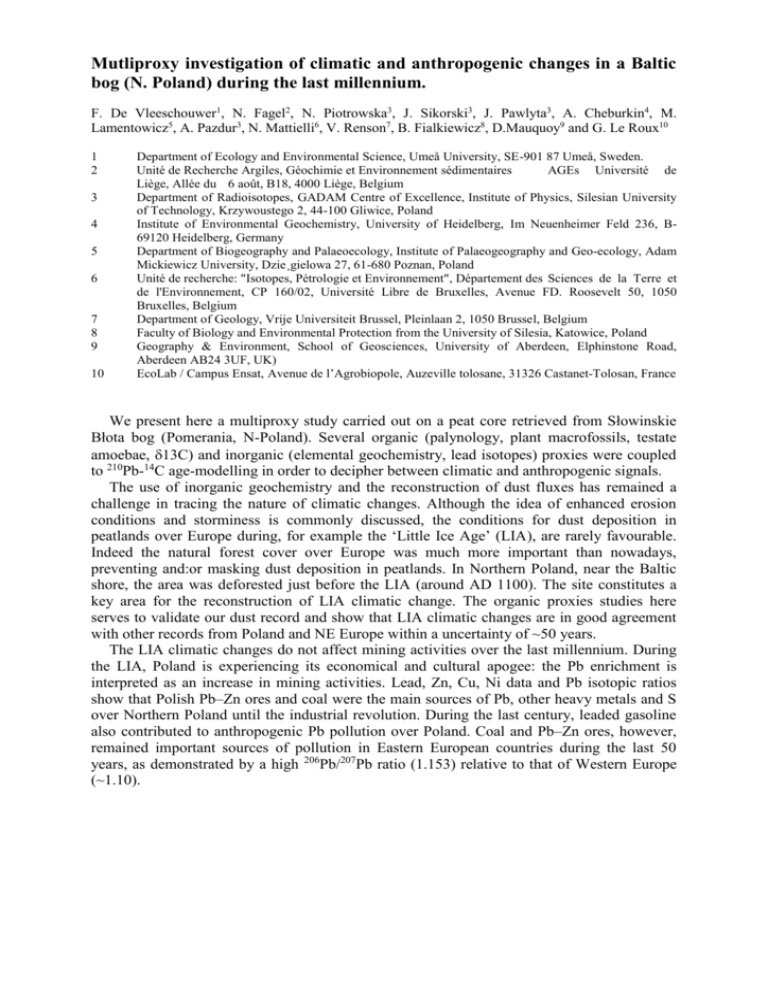
Mutliproxy investigation of climatic and anthropogenic changes in a Baltic bog (N. Poland) during the last millennium. F. De Vleeschouwer1, N. Fagel2, N. Piotrowska3, J. Sikorski3, J. Pawlyta3, A. Cheburkin4, M. Lamentowicz5, A. Pazdur3, N. Mattielli6, V. Renson7, B. Fialkiewicz8, D.Mauquoy9 and G. Le Roux10 1 2 3 4 5 6 7 8 9 10 Department of Ecology and Environmental Science, Umeå University, SE-901 87 Umeå, Sweden. Unité de Recherche Argiles, Géochimie et Environnement sédimentaires AGEs Université de Liège, Allée du 6 août, B18, 4000 Liège, Belgium Department of Radioisotopes, GADAM Centre of Excellence, Institute of Physics, Silesian University of Technology, Krzywoustego 2, 44-100 Gliwice, Poland Institute of Environmental Geochemistry, University of Heidelberg, Im Neuenheimer Feld 236, B69120 Heidelberg, Germany Department of Biogeography and Palaeoecology, Institute of Palaeogeography and Geo-ecology, Adam Mickiewicz University, Dzie¸gielowa 27, 61-680 Poznan, Poland Unité de recherche: "Isotopes, Pétrologie et Environnement", Département des Sciences de la Terre et de l'Environnement, CP 160/02, Université Libre de Bruxelles, Avenue FD. Roosevelt 50, 1050 Bruxelles, Belgium Department of Geology, Vrije Universiteit Brussel, Pleinlaan 2, 1050 Brussel, Belgium Faculty of Biology and Environmental Protection from the University of Silesia, Katowice, Poland Geography & Environment, School of Geosciences, University of Aberdeen, Elphinstone Road, Aberdeen AB24 3UF, UK) EcoLab / Campus Ensat, Avenue de l’Agrobiopole, Auzeville tolosane, 31326 Castanet-Tolosan, France We present here a multiproxy study carried out on a peat core retrieved from Słowinskie Błota bog (Pomerania, N-Poland). Several organic (palynology, plant macrofossils, testate amoebae, 13C) and inorganic (elemental geochemistry, lead isotopes) proxies were coupled to 210Pb-14C age-modelling in order to decipher between climatic and anthropogenic signals. The use of inorganic geochemistry and the reconstruction of dust fluxes has remained a challenge in tracing the nature of climatic changes. Although the idea of enhanced erosion conditions and storminess is commonly discussed, the conditions for dust deposition in peatlands over Europe during, for example the ‘Little Ice Age’ (LIA), are rarely favourable. Indeed the natural forest cover over Europe was much more important than nowadays, preventing and:or masking dust deposition in peatlands. In Northern Poland, near the Baltic shore, the area was deforested just before the LIA (around AD 1100). The site constitutes a key area for the reconstruction of LIA climatic change. The organic proxies studies here serves to validate our dust record and show that LIA climatic changes are in good agreement with other records from Poland and NE Europe within a uncertainty of ~50 years. The LIA climatic changes do not affect mining activities over the last millennium. During the LIA, Poland is experiencing its economical and cultural apogee: the Pb enrichment is interpreted as an increase in mining activities. Lead, Zn, Cu, Ni data and Pb isotopic ratios show that Polish Pb–Zn ores and coal were the main sources of Pb, other heavy metals and S over Northern Poland until the industrial revolution. During the last century, leaded gasoline also contributed to anthropogenic Pb pollution over Poland. Coal and Pb–Zn ores, however, remained important sources of pollution in Eastern European countries during the last 50 years, as demonstrated by a high 206Pb/207Pb ratio (1.153) relative to that of Western Europe (~1.10).
